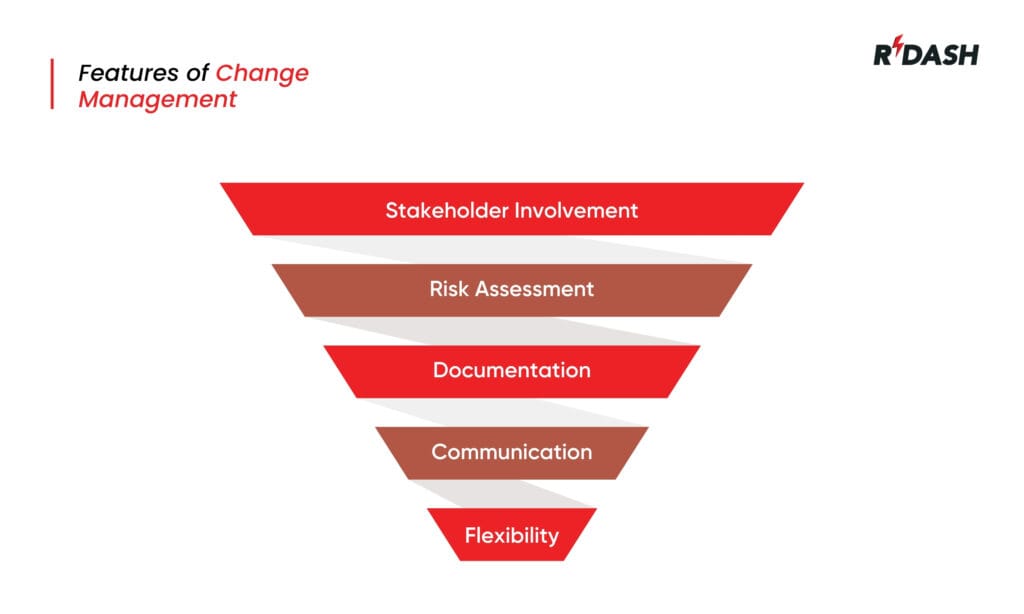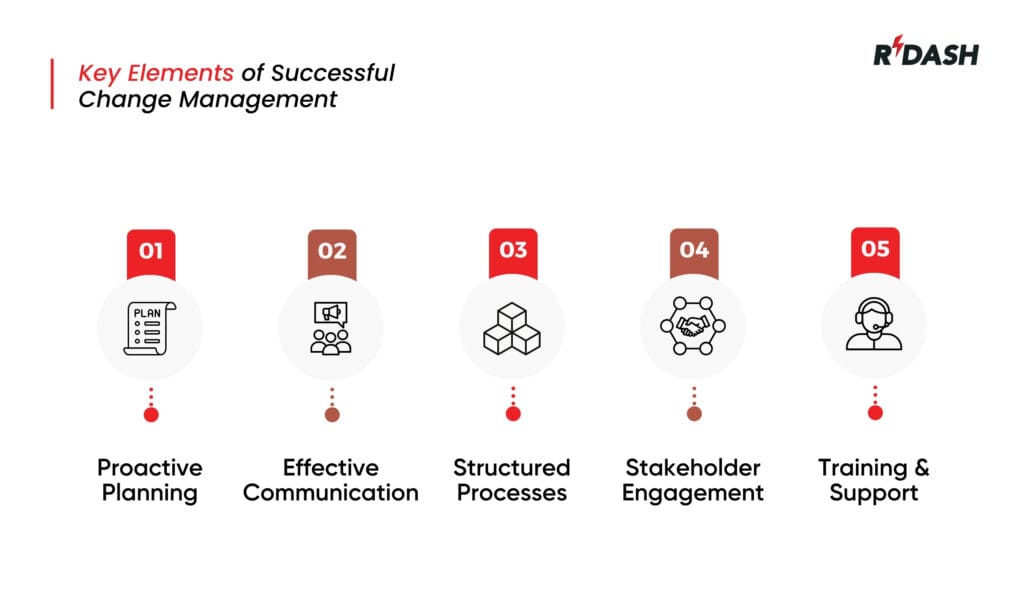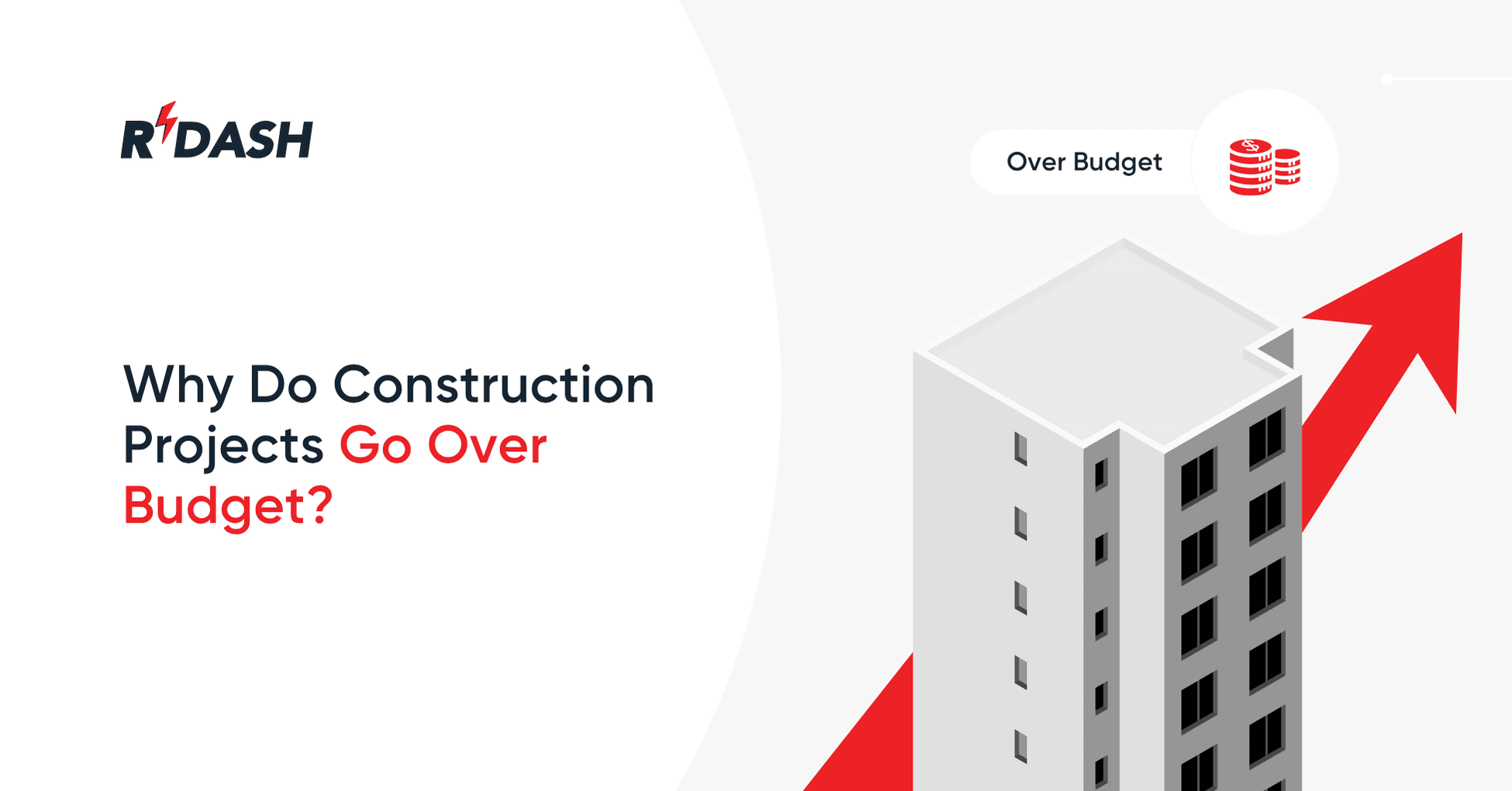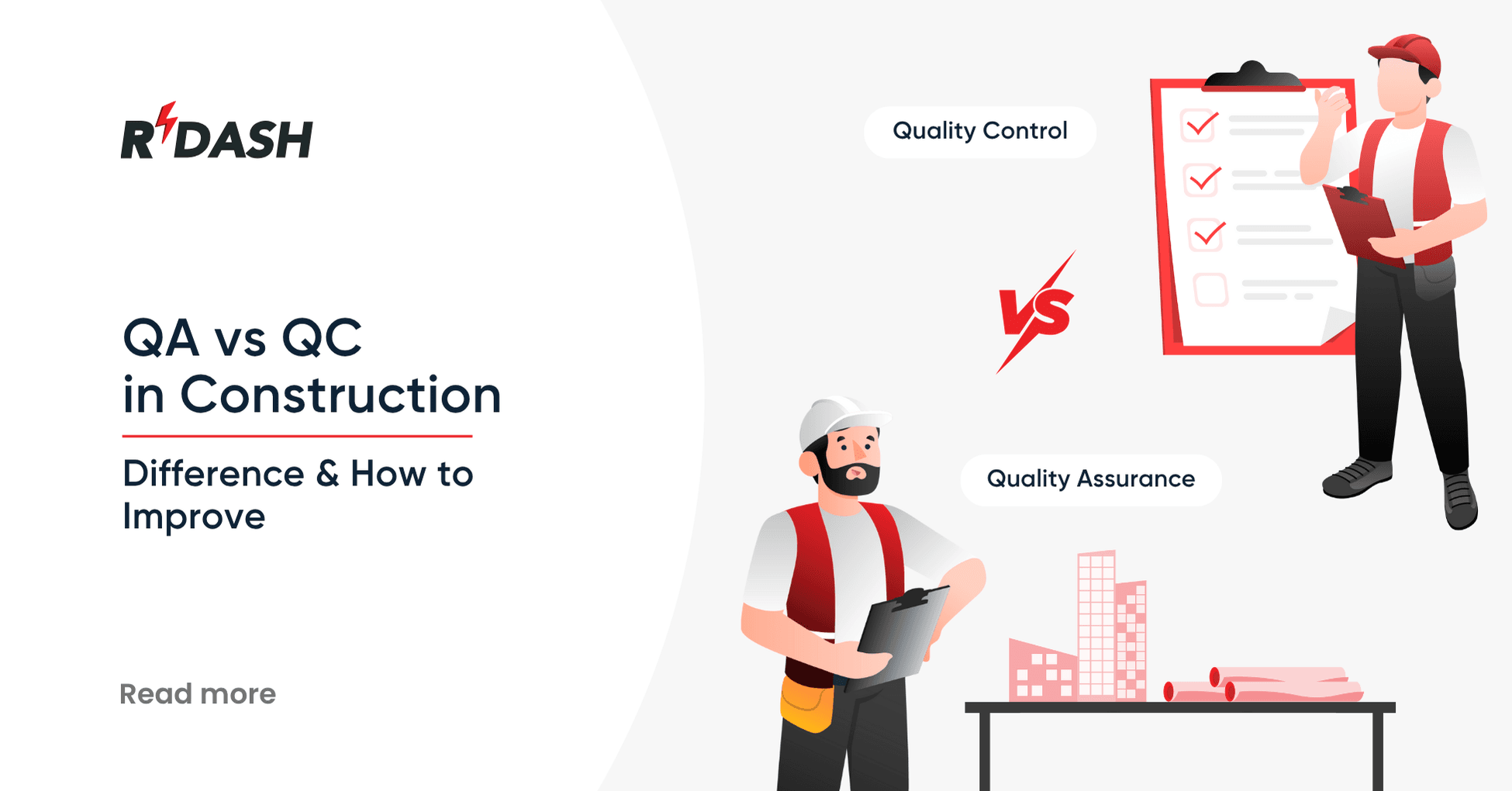What is construction change management?
Construction change management is a systematic approach to handling alterations that occur during a construction project. These changes can range from modifications in design and scope to unexpected challenges such as material shortages or regulatory updates. Effective change management involves anticipating potential changes, planning responses, and implementing processes that facilitate smooth transitions while keeping the project on track and within budget.
Features of change management
Several key features define robust change management in the construction industry:

Flexibility: Change management processes must be flexible enough to accommodate adjustments without derailing the overall project goals. This flexibility often requires dynamic planning and the ability to pivot quickly as situations evolve.
Communication: Open and transparent communication is crucial. All stakeholders, from architects and engineers to subcontractors and clients, need to be informed about changes and their implications in a timely manner.
Documentation: Rigorous documentation is essential in managing changes effectively. This includes updating project plans, revising drawings, and maintaining detailed records of decisions and communications to avoid disputes and ensure clarity.
Risk Assessment: Part of change management involves assessing the risks associated with potential changes. Understanding the impact of these changes on project scope, timeline, and budget is critical for making informed decisions.
Stakeholder Involvement: Engaging all stakeholders in the change management process helps in garnering support and facilitating smoother implementation of changes. It ensures that all perspectives are considered and that the final decisions are accepted by all parties involved.
Why change management is important in construction projects
The importance of change management in construction cannot be overstated:
Controls Costs: Effective change management helps to minimize cost overruns by addressing changes in a structured manner, ensuring that all cost implications are considered and managed.
Ensures Quality: By managing changes carefully, you can ensure that the quality of the project is not compromised. It allows for adjustments to be made while still adhering to the initial standards and specifications set for the project.
Reduces Delays: Implementing a proactive change management strategy helps in mitigating delays caused by unexpected changes. By planning for potential disruptions, projects are more likely to stay on schedule.
Improves Stakeholder Satisfaction: Proper change management ensures that all stakeholders are kept in the loop and their concerns are addressed, which can increase their overall satisfaction with the project outcome.
Enhances Decision Making: With a structured change management process, decisions are made based on a comprehensive understanding of their implications, leading to more strategic and effective outcomes.
Key elements of successful change management
Successful change management in construction relies on several core elements that ensure changes are handled effectively, maintaining project integrity and timelines:

Proactive Planning: Anticipating potential changes and having contingency plans ready is crucial. This involves risk assessments and scenario planning to quickly adapt to new challenges.
Effective Communication: Keeping all stakeholders informed about potential and actual changes is vital. Regular updates, meetings, and clear communication channels help mitigate misunderstandings and align everyone’s expectations.
Structured Processes: Implementing standardized procedures for initiating, approving, and implementing changes ensures consistency and reduces errors. This includes formal change requests and approval systems.
Stakeholder Engagement: Involving all key stakeholders in the change process ensures that changes are practical and have buy-in from all parties, which is crucial for smooth implementation.
Training and Support: Providing training and support to all team members involved in the change process helps them understand their roles and responsibilities, ensuring they can effectively manage changes.
Challenges of change management in the construction industry
Change management in construction faces unique challenges that can complicate project delivery:
Resistance to Change: Resistance from teams or stakeholders, especially when changes are frequent and significant, can hinder the adoption of new methods or adjustments.
Complex Coordination: Managing changes in large projects involves coordinating with multiple subcontractors, suppliers, and stakeholders, which can be complex and time-consuming.
Cost Implications: Changes can often lead to increased costs. Estimating these costs accurately and managing budget adjustments is a significant challenge.
Impact on Timelines: Changes can cause delays, affecting the overall project schedule. Minimizing these impacts requires efficient change implementation and management.
Documentation Overload: Proper documentation of changes is essential but can become overwhelming, especially on large projects with numerous changes.
Types of Change Management in the Construction Industry
Change management in the construction industry is a crucial aspect that ensures projects adapt to various needs and challenges efficiently. Here, we explore four specific types of change management that construction professionals may encounter:
Organizational Change: This type of change management addresses alterations within the structure or operations of the construction company itself. It might involve changes in leadership, reorganization of teams, or the adoption of new technologies. Organizational change is often strategic, aimed at improving efficiency, productivity, or company culture, ensuring that the organization can better handle project demands and market conditions.
Unexpected Change: These are changes that arise without warning, often caused by external factors such as sudden weather events, accidents on the construction site, or unforeseen regulatory changes. Managing unexpected changes requires a high degree of agility and resilience, with contingency planning and rapid response strategies ready to be deployed to minimize disruption to the project.
Remedial Change: Remedial changes are implemented to correct issues that have been identified during the construction process. These might include modifications to work methods, revisions in material specifications, or improvements in safety protocols following an incident. Remedial change is reactive, necessitated by the need to address specific problems that, if left unresolved, could lead to greater inefficiencies or project failures.
Transformational Change: This involves major changes that fundamentally transform the project scope or the way the project is executed. Such changes might be driven by new client requirements, major shifts in project goals, or innovative construction methods and technologies that offer significant advantages. Transformational change can be complex, requiring thorough planning and widespread buy-in from all project stakeholders to successfully implement.
Each type of change management in construction plays a crucial role in navigating the complexities of modern construction projects. By understanding and preparing for these different types, construction managers can ensure their projects are flexible, resilient, and capable of adapting to the ever-changing landscape of the industry.






